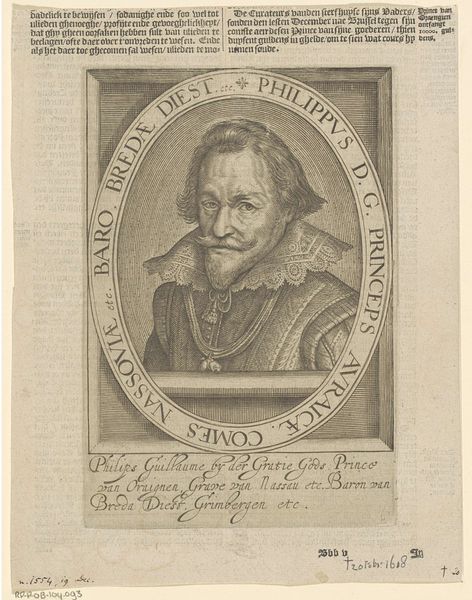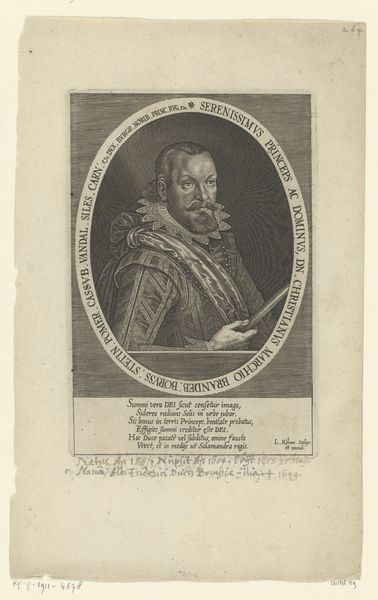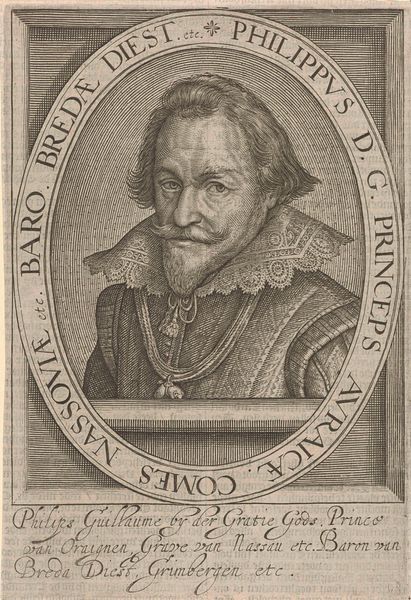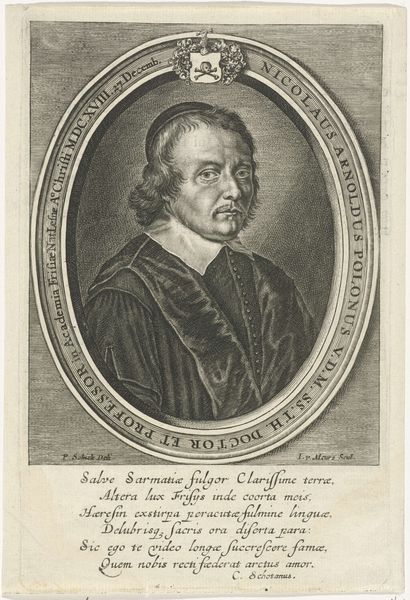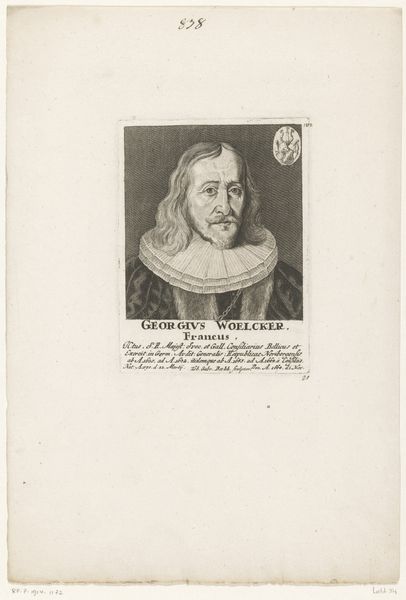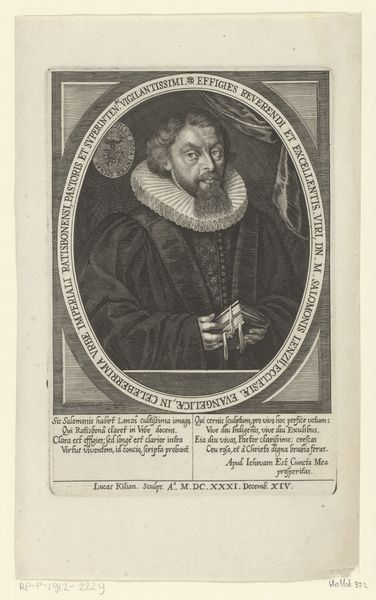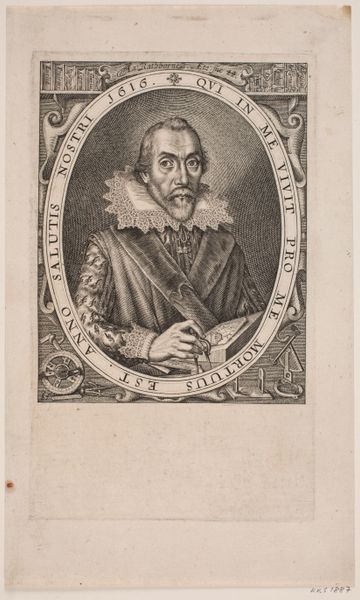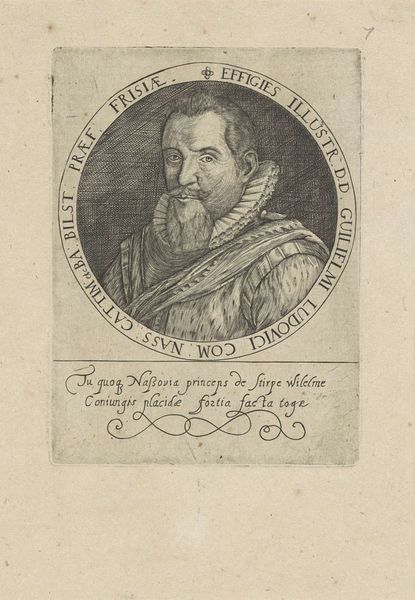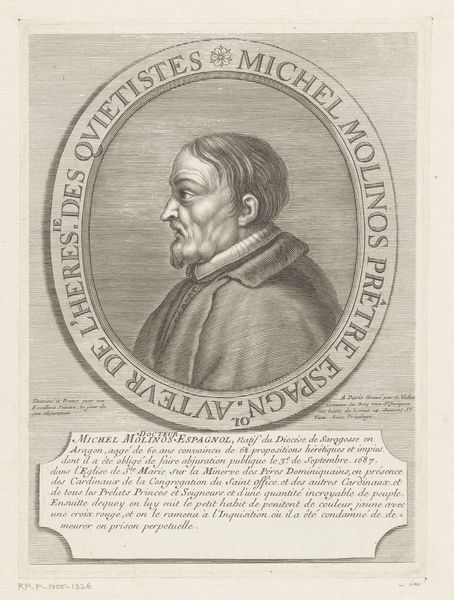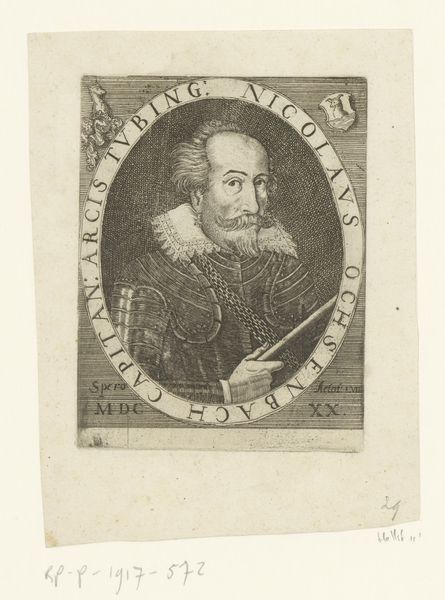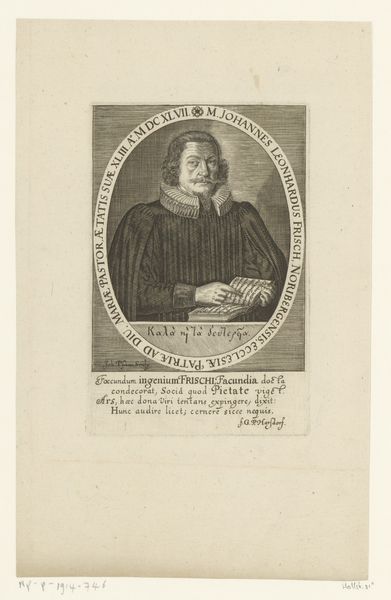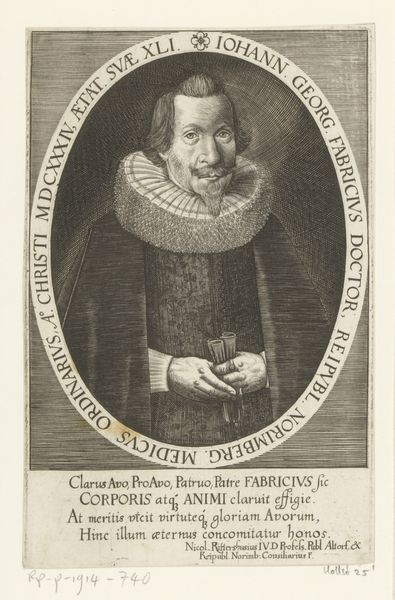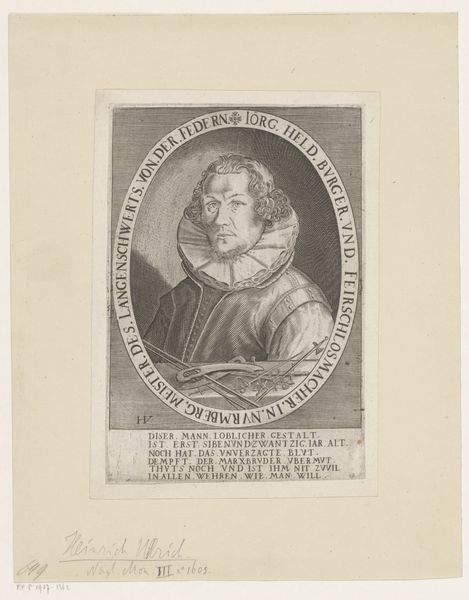
print, engraving
#
portrait
#
baroque
# print
#
old engraving style
#
engraving
Dimensions: height 234 mm, width 159 mm
Copyright: Rijks Museum: Open Domain
Curator: Here we have a 17th-century print, “Portret van Filips Willem, prins van Oranje,” housed at the Rijksmuseum, and created by an anonymous artist. The delicate engraving lends it a sort of austere dignity. What do you make of it? Editor: I'm immediately drawn to the man's face. He seems to be scrutinizing the viewer with a deep intensity, like a calculating politician. The Baroque style definitely contributes to the overall seriousness of the portrait. Can you share more about how symbols or imagery might amplify the impact of this portrait? Curator: The oval frame, containing inscriptions about the subject's titles, isn't just decorative. The reversed Latin phrase emphasizes his high status in society through symbolic script and visual representation, echoing motifs used in antiquity to reinforce power. Think of the visual rhetoric: does it tell a story about his place in society or perhaps about the expectations placed upon him? Editor: So, the inscriptions and framing are as significant as his physical likeness in conveying meaning. It is like these images were carefully constructed for cultural transmission. Do you think his clothing also conveys power? Curator: Precisely. Look at the meticulously detailed lace collar and ornate doublet. Clothing, throughout history, acts as a marker of social identity and standing, but here, it’s deliberately opulent to project authority and influence. The very act of commissioning a portrait also carried cultural weight, solidifying his image in the eyes of both his contemporaries and future generations. This perpetuates his legacy through symbolism. Editor: It’s interesting to think about how an image can do so much more than simply record a likeness. Curator: Absolutely. Prints like these helped shape perceptions and perpetuate cultural memory. So next time you encounter an artwork, consider the silent language of its symbolism.
Comments
No comments
Be the first to comment and join the conversation on the ultimate creative platform.
